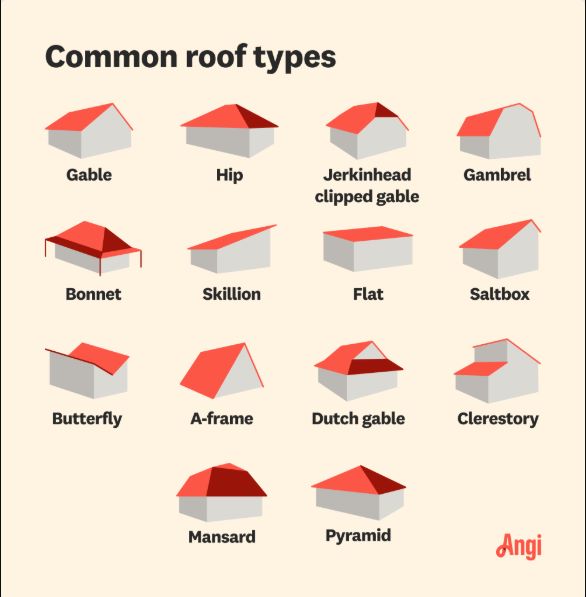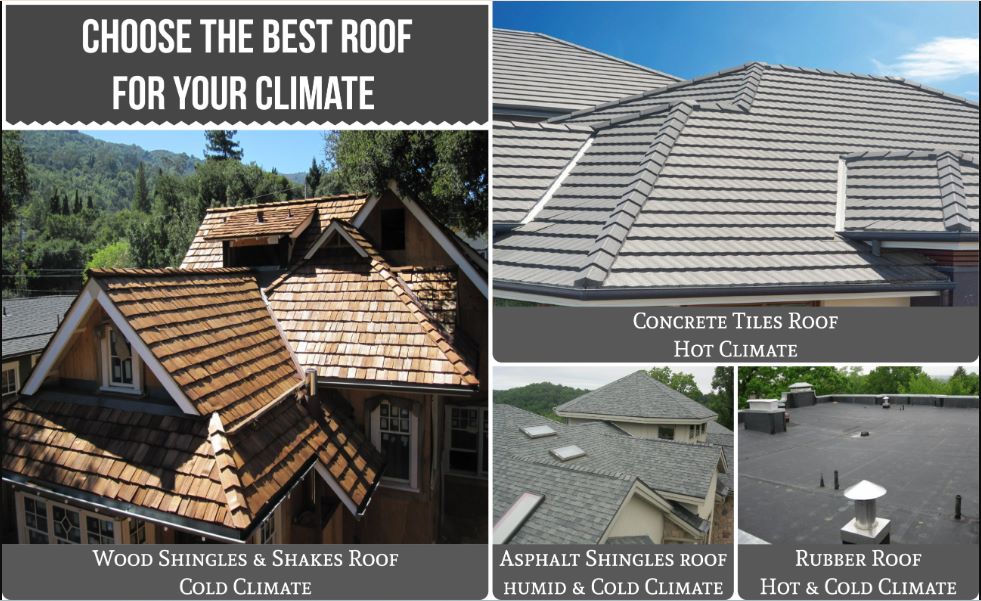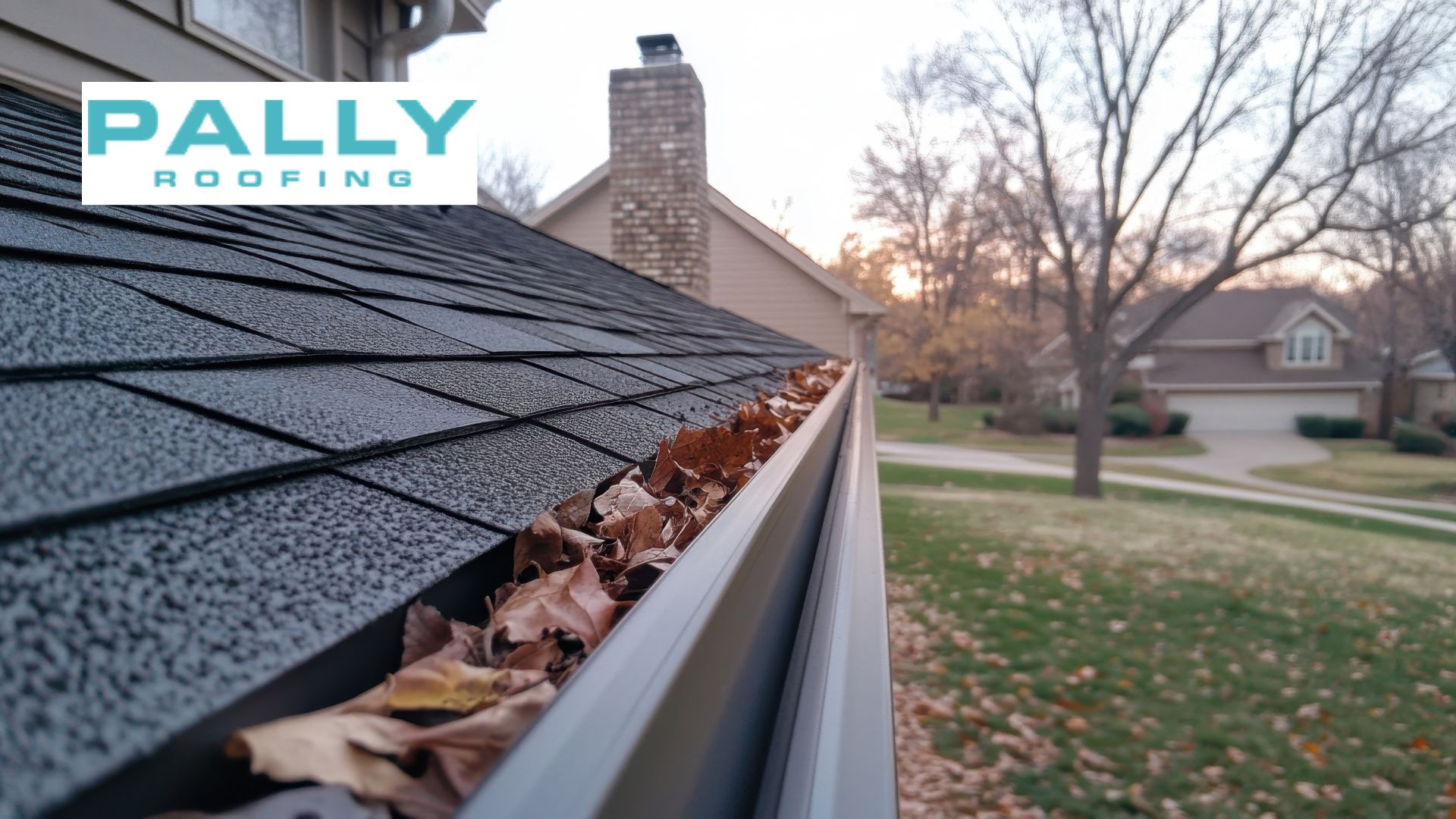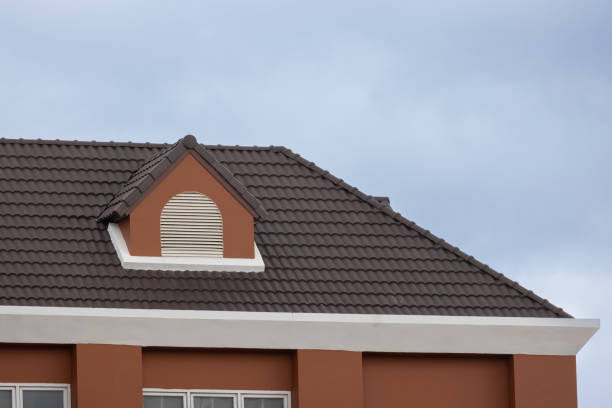Last updated on December 27th, 2024 at 05:13 pm
A proper roof is important for a home because it affects its longevity, handling, and energy efficiency. A well-chosen roof protects you from the weather and enhances the beauty of your entire property. With over 15 years of experience, Pally Roofing specializes in residential roof types for energy-efficient homes, offering customized roof installation services to meet homeowners’ unique needs in Garrettsville and nearby areas of Ohio. Transform your home with vibrant metal roof colors that combine durability, style, and energy efficiency—find your perfect match today!
Table of Contents
Common Roof Types for Homes
Several common roof types for homes offer distinct advantages in aesthetics, functionality, and climate suitability. Here are some of the most popular roof types:

Source: Media.Angi
1. Gable Roof
- Design: Simple, rectangular shape with two sloping sides.
- Benefits: Cost-effective, easy to build, provides additional roof space, and drains well.
- Ideal For: Traditional and modern homes in seasonal climates.
- Installation Considerations: The tone should be consistent to avoid drainage issues.
- Pally Roofing Expertise: With extensive experience in gable roof installations, Pally Roofing assures accurate installation and durable construction for a long-lasting and durable building in Garrettsville and nearby areas of Ohio.
2. Hip Roof
- Design: A slope with all four sides at the top.
- Benefits: Very durable in high winds and versatile for various construction methods.
- Ideal For: Homes in hurricane-prone or stormy regions.
- Installation Considerations: The complexity of many slopes requires careful calculation.
- Pally Roofing Expertise: Pally Roofing excels in hip roof installations, ensuring stability and maximum wind resistance for homes in Garrettsville and nearby Ohio areas.
3. Mansard Roof
- Design: Double-sloping, four-sided, sloped top and bottom.
- Benefits: Adds elegance, enhances top floor space, and increases property value.
- Ideal For: Historic homes or properties looking for new places to live.
- Installation Considerations: Requires precise handwork to prevent clogging of leaks and to maintain consistency.
- Pally Roofing Expertise: Our team ensures a flawless design and balances aesthetics and functionality in mansard roof installations in Garrettsville and nearby areas of Ohio.
4. Flat Roof Types
- Design: Flat or nearly flat with low pitch.
- Benefits: Affordable, ideal for urban homes, and suitable for solar panels or rooftop living spaces.
- Ideal For: Modern homes and commercial properties in dry climates.
- Installation Considerations: Proper waterproofing is essential to avoid water leakage.
- Pally Roofing Expertise: Pally Roofing ensures efficient drainage systems and long-lasting performance for flat roof types in Garrettsville and nearby areas of Ohio.
5. Saltbox Roof
- Description: Asymmetrical, one side longer than the other, box-like.
- Advantages: Provides additional space commonly found in colonial homes.
6. Curved Roof
- Description: Smooth, arching design.
- Advantages: Modern aesthetics and reduced wind resistance, but may require unique construction.
7. Shed Roof (Skillion)
- Description: A single-pitched roof that slopes in one direction.
- Advantages: Simple, economical, and commonly used in modern construction.
8. A-Frame Roof
- Description: A simple rectangular roof that acts as a ceiling and wall.
- Advantages: Effective snow filtration provides free indoor spaces that vacation homes love.
9. Jerkinhead Roof
- Description: Gable roof with trimmed ends to reduce wind damage.
- Advantages: Combines the benefits of gable and hip roofs, creating more head on stage.
10. Pyramid Hip Roof
- Description: The triangular base is similar to the top of the hip but terminates at a point.
- Advantages: Very resistant to strong winds, ideal for hurricane-prone areas.
Each roof offers unique benefits and varies in aesthetics, functionality, and protection depending on climate and location. To choose the perfect style for your home, understand the key differences between hip and gable roofs.
Roof Selection Guide: Climate Considerations
The climate is crucial in choosing a roof type for your home.
- Cold Climates: Steep slopes are suitable for dealing with snow accumulation.
- Hot Climates: Low ceilings with reflective materials reduce heat absorption.
- Windy Regions: Solid materials like hip roofs or mansard roofs provide superior resistance.
Pally Roofing in Garrettsville and nearby areas of Ohio offers personalized advice on roofing options that align with local weather conditions. This includes the best roof types for hot climates.
Benefits of Different House Roof Types for Homeowners
Each roof type for homes comes with its own set of advantages:
- Gable Roof: Provides better flow and additional roof space.
- Hip Roof: Highly insulated and versatile for many construction styles.
- Mansard Roof: Increases living space and enhances the beauty of any home.
- Flat Roof Types: Ideal for rooftop living or solar panel installation.
Pally Roofing specializes in helping homeowners choose the best roof types for residential homes based on their needs and preferences.
How to Choose the Right Roof for Your Home
Choosing the right roof involves balancing design, climate suitability, and durability. Pally Roofing provides a detailed roof selection guide to help homeowners in Garrettsville and nearby areas of Ohio identify the most suitable roofing options.
How to Choose the Best Roof Type for Your Home’s Climate
Choosing the right roof improves your home’s longevity, energy, and aesthetics. A chosen roof protects your home from the weather, and different weather conditions require different roofing solutions. This guide will help you understand how to select the ideal roof based on your local climate expertise at Pally Roofing, a trusted provider with over 15 years of experience in roofing services. Get expert tips on choosing the perfect roof design for your home to enhance style and functionality.

Source: Cloud Front Gharpediabucket
Understanding Your Local Climate
1. Cold Climates
- Recommended Roof Types: A pitched roof, such as a gable or mansard roof, is ideal.
- Benefits: The steep slope allows for faster snowfall, preventing heavy snow accumulations that could damage the structure.
- Considerations: Ensure adequate airtightness to prevent ice clogging.
2. Hot Climates
- Recommended Roof Types: Low or flat roofs with reflective materials.
- Benefits: Reflective materials help reduce heat absorption, keep your home cooler, and reduce energy costs.
- Considerations: Adequate ventilation is essential to prevent temperature rise in the attic.
3. Windy Regions
- Recommended Roof Types: Hip roofs or mansard roofs.
- Benefits: These systems are highly aerodynamic and provide excellent stability in strong winds.
- Considerations: Make sure the material is securely fastened, and the roof is designed to withstand strong winds.
Rainy or Humid Climates
- Recommended Roof Types: Gable roofs or roofs with a steep pitch.
- Benefits: Efficient water runoff minimizes the risk of leaks and water damage.
- Considerations: Choose materials that are resistant to mold and mildew.
Roofing Materials
Depending on the weather conditions, the choice of roofing materials plays an important role in a roof’s performance.
- Asphalt Shingles: Versatile and economical in a variety of weather conditions.
- Metal Roofing: Durable and shiny, making it ideal for hot climates.
- Clay Tiles: Good for hot climates because of their insulation.
- Wood Shingles: Beautiful but may require more maintenance in colder climates.
Pally Roofing can help homeowners choose the right materials for their specific climate needs, ensuring efficiency and durability.
The Importance of Professional Installation
Choosing the right roof is only part of the equation; commercial fixtures ensure efficiency and durability. Pally Roofing’s experienced team guarantees that every roof is installed correctly, preventing leaks and structural problems. Their expertise ensures compliance with local building codes and warranty requirements.
Choosing the best roof for your home requires careful consideration of your local climate, building style, and personal preferences. Contact Pally Roofing in Garrettsville and nearby areas of Ohio for expert advice tailored to your specific needs. With extensive experience installing roofs, they will help you make the right decisions that will save you years of investment.
Conclusion
Whether you’re looking for the best roof types for residential homes, need guidance on the benefits of different house roof types, or want expert advice on choosing the right roof for your home, Pally Roofing is your trusted partner. With a proven track record in delivering high-quality roof installation services, Pally Roofing in Garrettsville and nearby areas of Ohio ensures that every project is tailored to each homeowner’s needs.
Contact Pally Roofing today to explore the best roof types for homes in hot climates, understand the roofing options for homes, or get a personalized roof selection guide for your property.
Frequently Asked Questions
What Are The Common Types Of House Roofs?
Gable, hip, flat, shed, and mansard roof types exist.
What Is A Gable Roof?
A gable roof is a simple triangular roof with two sloping sides.
What Is A Hip Roof?
A hip roof has four sloping sides that meet at the top.
What Are The Advantages Of A Flat Roof?
Flat roofs are easy to build, cost-effective, and provide extra outdoor space.
What Is A Shed Roof?
A shed roof is a single-sloping roof with a steeper pitch.
Author
-

With more than 16 years of hands-on experience, Phillip Schmucker is the knowledgeable owner of Pally Roofing. His dedication to superior roofing services has earned him a reputable place in the industry. Phillip also shares his extensive expertise through writing, providing readers with practical tips and professional advice on various roofing topics. Follow him on LinkedIn.
View all posts






